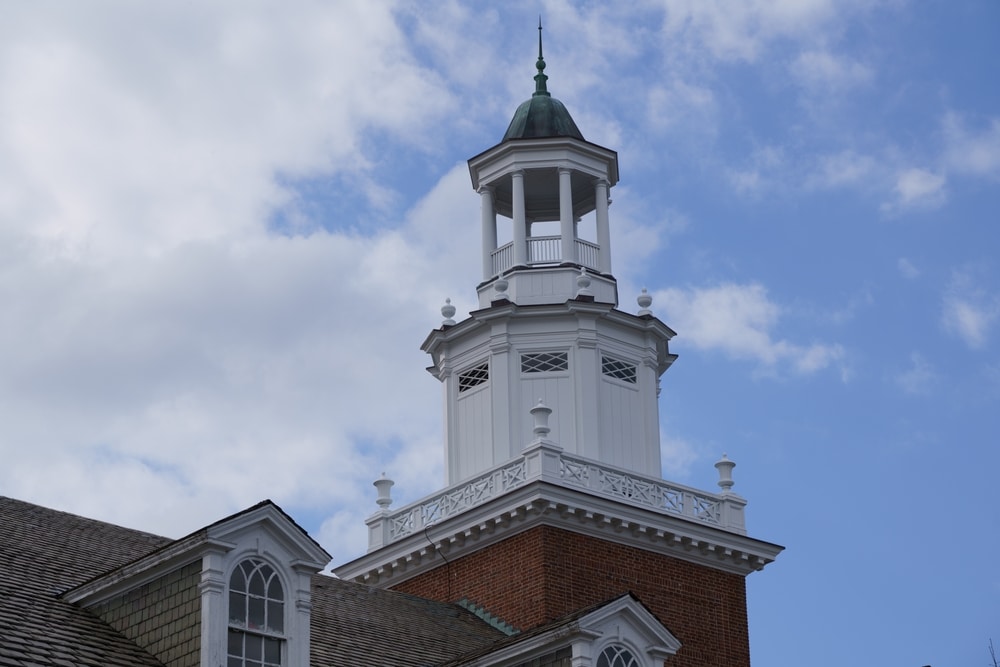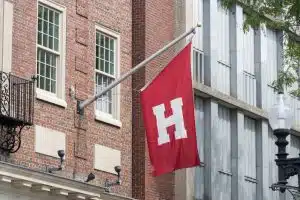Johns Hopkins’ Endowment: A Comprehensive Overview
In recent years, universities’ financial health has been a topic of interest among alumni, students, faculty, and stakeholders. Taking Johns Hopkins University as a case study, the subsequent sections delve deep into the concept of university endowments, the growth and development of Hopkins’ endowment over time, its current financial standing in comparison to other higher institutions, and a forecast of the institution’s future, considering its endowment.
Understanding the Concept of University Endowments
A ‘university endowment’ refers to a pecuniary gift bestowed upon universities, often by generous alumni, corporations, or philanthropic entities. These endowments are crucial to universities’ financial stability and growth, providing a solid foundation for their operations and initiatives.
Individuals or organizations commit to the university’s success when they make endowment gifts. These gifts are not meant to be spent immediately but rather invested strategically to generate returns that can be used to support various aspects of the university’s mission.
Endowments are a testament to the belief in the power of education and the transformative impact it can have on individuals and society. They represent a commitment to the future, ensuring that universities have the resources they need to thrive and continue making a difference.
The Role of Endowments in Higher Education
Endowments are often the financial bedrock for many premier universities. These funds typically provide a predictable source of income, buffering operations from fluctuations in other revenue sources such as tuition, grants, or state funding.
With the support of endowments, universities can maintain a stable financial position, allowing them to weather economic downturns and unforeseen challenges. This stability benefits the institution and its students, faculty, and staff, who rely on the university for their education and livelihoods.
Besides financial stability, endowments offer permanent scholarships, professorships, and research funding—making them integral in promoting academic excellence and socio-economic diversity in higher institutions. These funds enable universities to attract and support talented students from diverse backgrounds, ensuring that education is accessible to all who have the potential and drive to succeed.
How Endowments Support University Operations
Universities make use of the returns from their endowment investments to facilitate their operations. These returns often fund a percentage of the institution’s annual operating costs, taking the burden off tuition and other revenue sources.
At Johns Hopkins, for example, the endowment helps bolster operations across instruction, research, public service, and more. The endowment also assists in attracting and retaining top-notch faculty, fostering premier academic programs, and supporting healthcare services in its broad network of hospitals.
By relying on endowment returns, universities can invest in cutting-edge research facilities, update technology infrastructure, and expand their course offerings. This allows them to stay at the forefront of innovation and provide students with a world-class education that prepares them for future challenges.
Furthermore, endowments often support community engagement initiatives, enabling universities to contribute to their surrounding areas’ social and economic development. Through partnerships with local organizations and outreach programs, universities can address pressing societal issues and make a positive impact beyond their campuses.
In conclusion, university endowments are not just financial assets; they are a testament to the belief in the power of education and the commitment to creating a better future. These endowments provide stability, support academic excellence, and enable universities to fulfill their mission of advancing knowledge, fostering innovation, and shaping the leaders of tomorrow.
The History of Johns Hopkins University’s Endowment
The financial trajectory of this prestigious university is of significant interest, as it highlights the institution’s growth and commitment to academic and research excellence.
Johns Hopkins University’s endowment started with an initial bequest from its namesake, Johns Hopkins, a Baltimore entrepreneur and philanthropist. Since that original gift in 1873, the university’s endowment has grown primarily through additional donations and investment returns.
The growth of the endowment over the decades reveals the university’s commitment to financial prudence. It also shows the enduring support of the Hopkins community, which continuously donates to bolster the university’s operations and objectives.
The need for a robust endowment became increasingly apparent as the university expanded its academic programs and research initiatives. Recognizing this, Hopkins embarked on a comprehensive fundraising campaign in the early 20th century to secure additional resources for the endowment. This campaign attracted generous contributions from alumni and supporters and fostered a culture of philanthropy within the Hopkins community.
Throughout the mid-20th century, the endowment continued to grow steadily, thanks to prudent investment strategies and the university’s commitment to long-term financial planning. These efforts allowed Hopkins to weather economic downturns and maintain its position as a leading academic institution.
Recent Trends and Developments
In recent years, Hopkins’ endowment has continued to enjoy steady growth. The robust stock market performance and the university’s strategic investment efforts have been instrumental in this growth. As of fiscal year 2022, Johns Hopkins’ endowment is at $8.2 billion.
Moreover, Hopkins has been proactive in raising additional funds through various philanthropic initiatives. These additional resources further augment the university’s endowment, supporting ongoing commitments while affording innovation and growth opportunities.
One notable recent development is the establishment of endowed chairs and professorships, made possible by generous donations from alumni and supporters. These endowed positions attract top-tier faculty and ensure academic departments and research centers’ long-term financial stability.
Furthermore, Hopkins has actively sought partnerships with industry leaders and government agencies, resulting in significant research grants and sponsorships. These collaborations provide financial support and foster a culture of innovation and entrepreneurship within the university community.
Looking ahead, Hopkins remains committed to growing its endowment to support its mission of advancing knowledge and improving lives. The university continues exploring new fundraising avenues, including targeted campaigns for specific academic programs and research initiatives.
Overall, the history of Johns Hopkins University’s endowment reflects a legacy of financial stewardship and community support. As the university continues to thrive and expand, its endowment will play a vital role in ensuring its long-term success and impact.
Analysis of Johns Hopkins University’s Current Financial Health
Examining the current financial health of an institution requires a comprehensive review of its financial statements and key indicators. By delving into the audited financial statements of Johns Hopkins University, we can gain a reliable snapshot of the institution’s current financial position and make informed assessments.
Overview of Financial Statements
The audited financial statements of Johns Hopkins University provide a reliable snapshot of the institution’s current financial position. These documents consider the university’s assets, liabilities, revenues, and expenses, including the performance of its endowment portfolio.
However, the endowment of Johns Hopkins University dropped approximately $1 billion in the latest fiscal year, mirroring a broader pattern seen in colleges across the country. Based on the university’s latest financial audit, its endowment went from $9.3 billion in June 2021 to $8.2 billion in June 2022, marking an 11% reduction.
Still, when examining the financial statements closely, we find that Johns Hopkins University demonstrates a commendable financial health and stability level. The university maintains a diversified revenue base, with significant contributions from tuition, grants, and returns on endowments. This diversified revenue stream helps the university navigate economic fluctuations and ensures a steady inflow of funds to support its operations and initiatives.
Moreover, the financial statements reveal that Johns Hopkins University has successfully managed its expenses and maintained a healthy balance between revenues and expenditures. This prudent financial management is a testament to the institution’s commitment to long-term sustainability and responsible fiscal practices.
Additionally, the financial statements shed light on the performance of the university’s endowment portfolio. Over the years, the endowment has exhibited consistent growth, even in the face of market uncertainties. This growth reflects the university’s astute investment strategies and the ability to generate positive returns on its endowment assets. The strong performance of the endowment not only bolsters the university’s financial position but also provides a stable source of funding for various academic and research endeavors.
Key Financial Indicators
Several key financial indicators are germane to assessing the financial health of a university. For Johns Hopkins, these indicators include endowment size, financial stability, operating margin, and the debt-to-capitalization ratio.
Firstly, the size of the university’s endowment is a crucial indicator of its financial strength. A larger endowment signifies a greater ability to generate income and support the institution’s operations. In the case of Johns Hopkins University, the endowment has consistently grown over the years, reflecting the institution’s successful fundraising efforts and effective investment management.
Furthermore, financial stability is vital to any institution’s financial health. Johns Hopkins University has demonstrated commendable financial stability, as evidenced by its consistently generating positive operating margins. This indicates that the university’s revenue streams are sufficient to cover its operating expenses and leave room for reinvestment and growth.
Lastly, the debt-to-capitalization ratio provides insights into the university’s financial leverage and ability to manage its debt obligations. Johns Hopkins University maintains a healthy debt-to-capitalization ratio, indicating that its debt levels are manageable and do not pose a significant risk to its overall financial health.
Ultimately, Johns Hopkins University’s financial health analysis reveals a robust and stable institution. Through prudent financial management, a diversified revenue base, and a well-performing endowment, the university has positioned itself as a financially sound institution capable of weathering economic uncertainties and supporting its academic mission.
Comparing Johns Hopkins’ Endowment to Other Universities
When assessing the financial standing of Johns Hopkins University, it is essential to compare its endowment size and student population to other top-tier universities. By doing so, we can gain a broader perspective on the university’s financial capacity and ability to invest in its students.
Endowment Size and Student Population
While Johns Hopkins may not have the largest endowment compared to institutions such as Harvard or Yale, it is crucial to consider the endowment-to-student ratio. This ratio provides insight into how effectively the university can allocate its financial resources to benefit its student population.
Johns Hopkins’ endowment-to-student ratio remains competitive despite not having the largest endowment. This suggests that the university has a significant capacity to invest in its students and provide them with the necessary resources for a quality education.
Endowment Per Student Ratio
One key indicator of a university’s financial resources for its students is the endowment per student ratio. This ratio is quite favorable at Johns Hopkins, indicating that the university possesses substantial student financial resources.
With a strong endowment per student ratio, Johns Hopkins can offer a wide range of scholarships, learning opportunities, and financial aid to support its diverse student body. This commitment to academic excellence and equity is evident in the university’s efforts to bridge socioeconomic disparities among its students.
By having a robust endowment per student ratio, Johns Hopkins can ensure that all students, regardless of their financial background, have the resources they need to thrive academically and personally.
Furthermore, this favorable ratio allows the university to invest in cutting-edge research, state-of-the-art facilities, and renowned faculty members, all of which contribute to the overall educational experience at Johns Hopkins.
In conclusion, while Johns Hopkins may not have the largest endowment size compared to other top-tier universities, its endowment-to-student ratio and endowment-per-student ratio demonstrate the university’s commitment to providing a high-quality education and supporting its diverse student population. These financial resources enable Johns Hopkins to offer scholarships, learning opportunities, and financial aid, ensuring that all students have the chance to excel and reach their full potential.
The Impact of Johns Hopkins’ Endowment on Its Future
The university’s endowment will significantly shape its future vis-à-vis funding research activities, promote innovation, and ensure long-term planning.
Funding for Research and Innovation
Johns Hopkins University greatly emphasizes research and innovation, and its endowment is critical in this respect. These funds allow the university to attract and support top researchers, contribute to groundbreaking studies, and continuously improve facilities and equipment.
Moreover, the endowment’s ability to continually fund research and innovation positions Johns Hopkins as a leader in countless fields of academic pursuit, fostering a consistent culture of discovery and progress.
Financial Sustainability and Long-Term Planning
The size and management of an endowment can be a barometer of a university’s future sustainability. In this respect, Johns Hopkins is well-positioned for the long term, thanks to its sizable endowment and strategic financial planning.
Not only does the endowment buffer the university against economic downturns, but it also ensures the availability of funds for strategic initiatives, infrastructure improvements, and scholarship opportunities. Therefore, Johns Hopkins’ endowment plays an indispensable role in securing the university’s future while continuing to uphold its mission of contributing to global knowledge and society.
If you need help putting the finishing touches on your college applications, at AdmissionSight, we have over 10 years of experience guiding students through the competitive admissions process.
AdmissionSight can help you put your best foot forward when applying to college this fall. Contact us today for more information on our services.







































